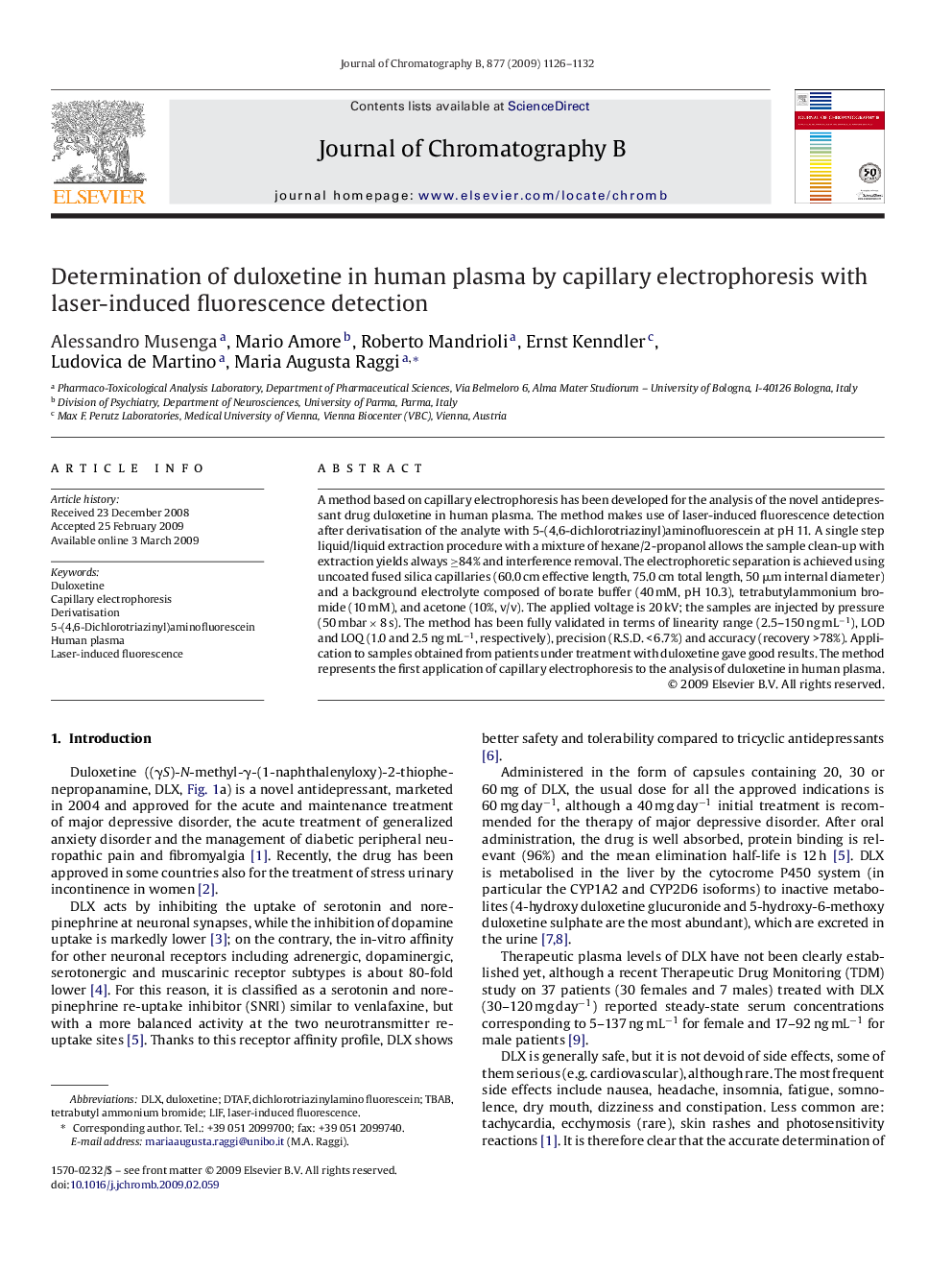| Article ID | Journal | Published Year | Pages | File Type |
|---|---|---|---|---|
| 1216243 | Journal of Chromatography B | 2009 | 7 Pages |
A method based on capillary electrophoresis has been developed for the analysis of the novel antidepressant drug duloxetine in human plasma. The method makes use of laser-induced fluorescence detection after derivatisation of the analyte with 5-(4,6-dichlorotriazinyl)aminofluorescein at pH 11. A single step liquid/liquid extraction procedure with a mixture of hexane/2-propanol allows the sample clean-up with extraction yields always ≥84% and interference removal. The electrophoretic separation is achieved using uncoated fused silica capillaries (60.0 cm effective length, 75.0 cm total length, 50 μm internal diameter) and a background electrolyte composed of borate buffer (40 mM, pH 10.3), tetrabutylammonium bromide (10 mM), and acetone (10%, v/v). The applied voltage is 20 kV; the samples are injected by pressure (50 mbar × 8 s). The method has been fully validated in terms of linearity range (2.5–150 ng mL−1), LOD and LOQ (1.0 and 2.5 ng mL−1, respectively), precision (R.S.D. < 6.7%) and accuracy (recovery >78%). Application to samples obtained from patients under treatment with duloxetine gave good results. The method represents the first application of capillary electrophoresis to the analysis of duloxetine in human plasma.
